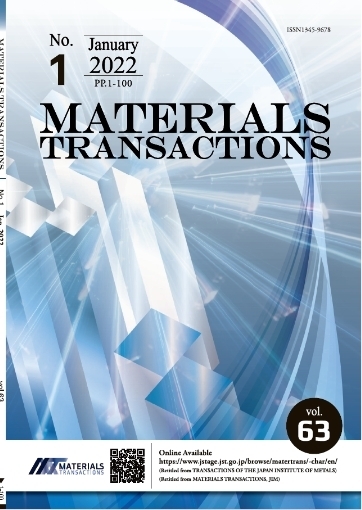Surface Treatment to Provide a Metallic Luster to AZ31 Magnesium Alloy
Miyoshi Ohara, Kenji Higashi
pp. 1076-1081
抄録
To form a metallic luster on AZ31 magnesium alloy, it is necessary to optimize the surface morphology since the surface roughness affects the specular reflection of visible light, and the surface structure such as the film thickness and properties must be optimized so that light is not absorbed. We conducted experiments to analyze the relationship between surface roughness and specular reflection, and determined the range required to produce metallic luster. The ratio of the root mean square roughness σ to the wavelength of incident light λ was 0–0.067, and the ratio of the specular reflectivity R of the specimens to the specular reflectivity of a smooth surface R0 was 0.54–1.0. The thickness of film to form a metallic luster was theoretically analyzed and found to be about 100 nm or less. The authors developed an optimum acid aqueous solution for treating the surface to form a metallic luster on the surface of AZ31 magnesium alloy. This treatment satisfied the range required to form a metallic luster identified theoretically, and formed a film with a stable structure that maintained its metallic luster. The treatment maintained the geometrical patterns such as the hair-line and blast finishing of several hundred nm or more. A sufficiently high-quality surface for exterior parts was obtained by improving the process, and the process was industrialized.
他の人はこちらも検索
MATERIALS TRANSACTIONS Vol.52(2011), No.5
MATERIALS TRANSACTIONS Vol.52(2011), No.5
MATERIALS TRANSACTIONS Vol.52(2011), No.6










